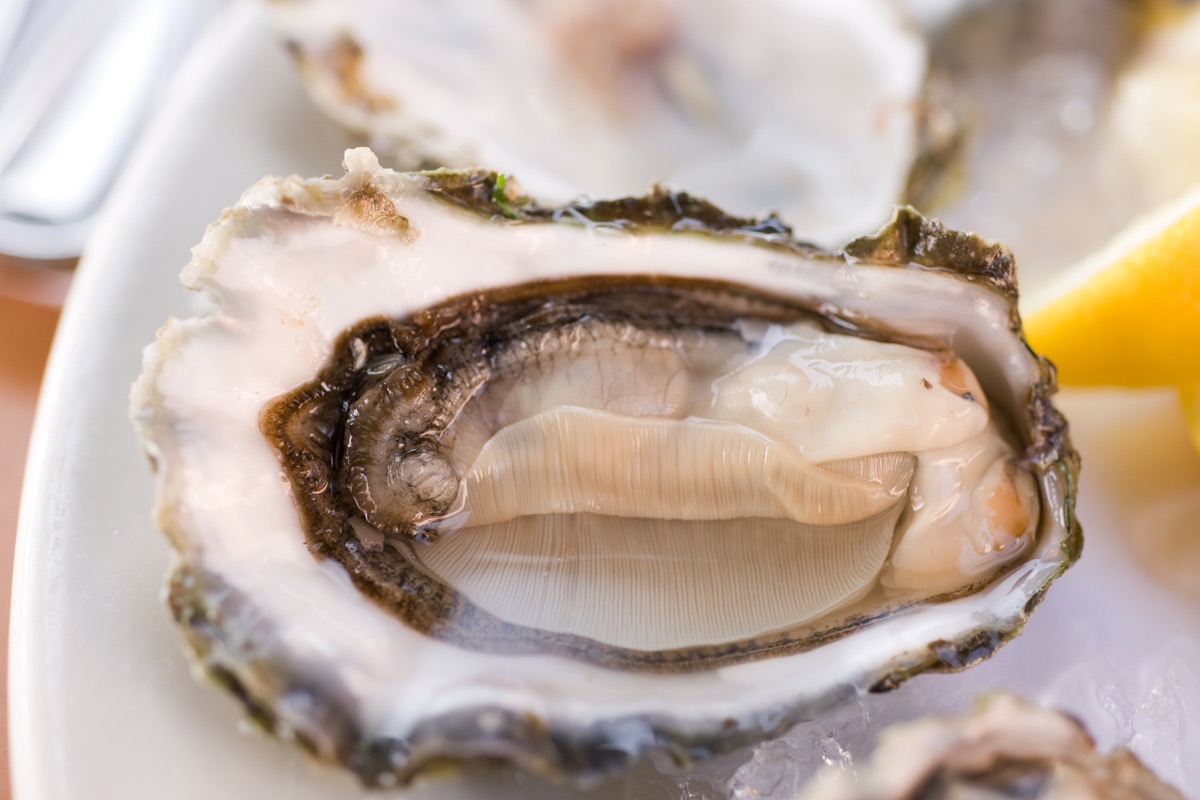RELATED: If You Have This Lettuce at Home, Don’t Eat It, CDC Says. If you live in Washington or Texas, you may want to take some extra precautions the next time you’re shucking: Officials are warning that a surge in Vibrio bacteria has created an elevated risk for anyone eating local shellfish. While the microorganisms are found naturally in the environment, record high temperatures experienced during this summer’s historic heatwaves combined with low tides at the end of June created pristine breeding grounds for the bacteria.ae0fcc31ae342fd3a1346ebb1f342fcb “Another effect of the recent heatwave is the perfect storm of conditions for Vibrio infections,” Todd Phillips, Director of the Washington Office of Environmental Health and Safety, said in a statement. “It’s important that when enjoying shellfish, we follow simple steps to stay healthy.” According to the Washington State Department of Health (DOH), a record-breaking 52 cases of vibriosis have been reported in July. The agency reports that commercial oysters caused 26 cases, four were from recreationally collected oysters, and the rest are under investigation. The Washington DOH warns that people can get vibriosis by eating raw or undercooked shellfish. Symptoms of the infection are similar to food poisoning and include diarrhea, abdominal cramps, nausea, vomiting, headache, fever, and chills that show up anywhere from four hours to four days after eating contaminated shellfish. However, the Centers for Disease Control and Prevention (CDC) warns that while most infections pass within two to three days, those caused by the Vibrio vulnificus strain can lead to severe illnesses such as blood infections and severe blistering skin lesions. The agency warns that these cases often require intensive care or limb amputations, with 15 to 30 percent overall proving fatal. The CDC warns that oysters infected with Vibrio look, smell, and taste the same as any other oyster. They also warn that drinking alcohol or using lemon juice and hot sauce won’t kill the harmful bacteria. Instead, the Washington DOH recommends following the “three Cs” for shellfish safety: “Cook shellfish to 145 degrees for at least 15 seconds, check the DOH’s shellfish safety map before gathering from beaches, and cool shellfish immediately for the trip home, whether gathered or bought.” RELATED: If You’re Eating This for Breakfast, Stop Immediately, Authorities Say. Unfortunately, slurping oysters isn’t the only time when Vibrio can be potentially dangerous. Besides eating shellfish in Washington, doctors in the Galveston, Texas area are also echoing CDC warnings that open wounds can get infected by the same harmful bacteria. “We typically see Vibrio from late June, early July, to probably later [in] October,” Alfred Scott Lea, MD, a professor of infectious disease at the University of Texas-Medical Branch (UTMB), said in an interview with local ABC affiliate KTRK-TV. “That’s the season, and that’s when the tourists are here, too.” Lea added that the county usually sees six to eight Vibrio cases annually—typically more than anywhere else in the U.S. The CDC warns that the harmful bacteria can enter open wounds while wading in brackish or saltwater at the beach, potentially creating serious complications. According to the agency’s website: “Some Vibrio vulnificus infections lead to necrotizing fasciitis, a severe infection in which the flesh around an open wound dies. Some media reports call this kind of infection ‘flesh-eating bacteria,’ even though necrotizing fasciitis can be caused by more than one type of bacteria.” RELATED: For more up-to-date information, sign up for our daily newsletter. To avoid infection, the CDC warns that anyone with an open wound—including recent piercings or tattoos—should avoid contact with brackish or saltwater, including wading. This is especially true for people with pre-existing conditions such as diabetes, liver disease, cancer, or those who are immunocompromised, as well as anyone who has had major recent surgery or organ transplant. The CDC says besides the symptoms experienced from eating contaminated shellfish, wounds that have been infected by the bacteria are accompanied by fever, redness, pain, swelling, warmth, discoloration, and discharge of fluids. Anyone who notices the symptoms should seek medical attention immediately and make them aware you’ve recently spent time at the beach. “They need to let their healthcare provider know that they have been in the water along the coast so that the physicians know to be watching for Vibrio,” Lea advised. “It takes a different kind of antibiotic than what the physician would ordinarily issue, and the only key that the physician will pick up on is that they’ve been in that estuary or brackish water [while] fishing and shrimping or crabbing.” RELATED: If You Have This in Your Freezer, Throw It Out Immediately, USDA Warns.



